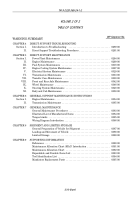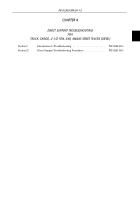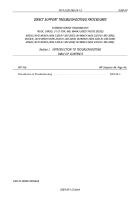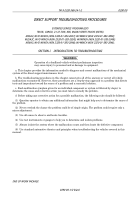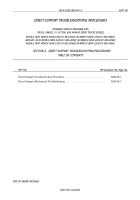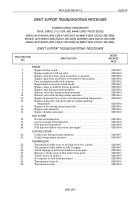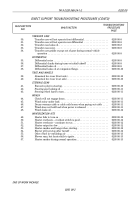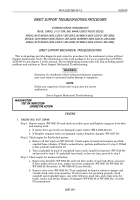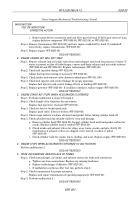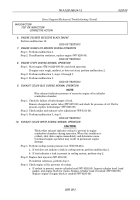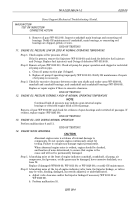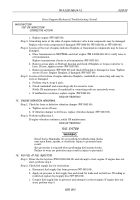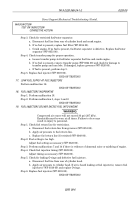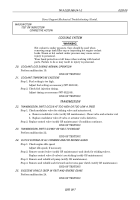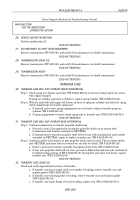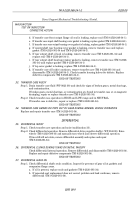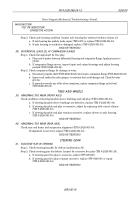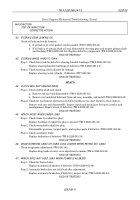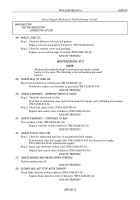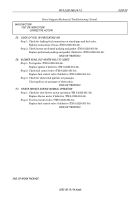TM-9-2320-386-24-1-2 - Page 18 of 636
Direct Support Mechanical Troubleshooting (Contd).
MALFUNCTION
TEST OR INSPECTION
CORRECTIVE ACTION
b. Remove oil pan (WP 0312 00). Inspect crankshaft main bearings and connecting rod
bearings. Notify GS maintenance if crankshaft, main bearings, or connecting rod
bearings are chipped, pitted, or worn.
END OF TESTING!
11. ENGINE OIL PRESSURE LOW OR ZERO AT NORMAL OPERATING TEMPERATURE
Step 1. Check engine oil for presence of fuel.
If fuel is present, remove fuel injectors (WP 0319 00) and check for defective fuel injectors
and O-rings. Replace fuel injector(s) and O-rings if defective (WP 0319 00).
Step 2. Remove oil pan (WP 0312 00). Check oil pump for proper operation and clogged or restricted
oil pump suction pipe.
a. Clean oil pump suction pipe if clogged.
b. Replace oil pump if operating improperly (WP 0313 00). Notify GS maintenance if repair
of oil pump is necessary.
Step 3. Check for excessive clearance between rocker arm shafts and rocker arms WP 0309 00,
camshaft and camshaft bearings, and crankshaft and crankshaft bearings (WP 0364 00).
Replace or repair engine if there is excessive clearance.
END OF TESTING!
12. ENGINE OIL PRESSURE EXTREMELY HIGH AT NORMAL OPERATING TEMPERATURE
NOTE
Continued high oil pressure may indicate spun internal engine
bearings or restricted engine block oil feed passage.
Remove oil pan (WP 0312 00) and check for evidence of spun bearings and restricted oil passages. If
evident, replace engine (WP 0295 00).
END OF TESTING!
13. ENGINE OIL LOSS DURING NORMAL OPERATION
Perform malfunctions 9 and 11.
END OF TESTING!
14. ENGINE NOISE ABNORMAL
CAUTION
Abnormal engine noise is evidence of internal damage to
components. Do not operate engine continuously except for
testing. Failure to comply may damage engine permanently.
When abnormal engine noise is evident, engine should be checked,
and location of noise determined, to ensure that engine is the
cause and will not be permanently damaged.
Step 1. A knocking noise at the front of engine indicates camshaft, crankshaft, oil pump, air
compressor, fuel governor, or idle gears may be damaged, have excessive backlash, or a
loose fit.
Replace if damaged (WP0169 00, WP 0313 00, or WP 0326 00), or notify GS maintenance.
Step 2. A knocking noise at the top of engine indicates valve train, fuel injector linkage, or valves
may be worn, binding, damaged, incorrectly adjusted, or underlubricated.
a. Adjust valve clearance and/or fuel injector linkage if necessary (WP 0311 00 or
WP 0320 00).
b. Perform malfunction 10.
TM 9-2320-386-24-1-2
0293 00
0293 00-4
Back to Top

